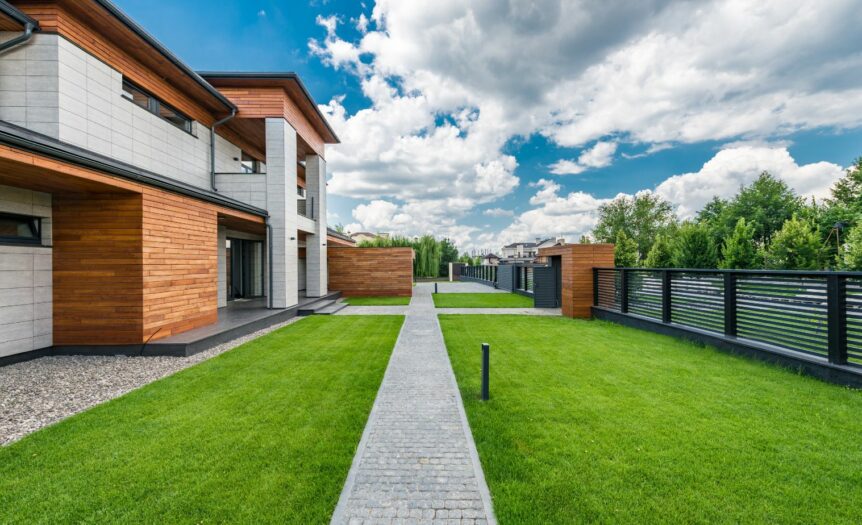When it comes to safeguarding your property, choosing the right enclosure is crucial. The two primary options that homeowners often consider are fences and fortresses. Each option has its unique advantages and disadvantages, making it essential to make an informed decision that suits your specific needs. In this article, we’ll explore the factors to consider when selecting an enclosure for your property and touch upon whether home insurance covers fences.
Fences: A Classic Choice
Fences have been used for centuries to mark property boundaries, provide privacy, and enhance security. They come in various materials and styles, making them a versatile option for different needs and preferences. Here are some key considerations when choosing a fence:
- Material: Fences can be made from wood, vinyl, metal, and other materials. Each material has its own advantages. Wood offers a classic and natural look, while metal provides durability and security. Vinyl is low-maintenance and long-lasting.
- Style: The style of your fence can greatly impact your property’s curb appeal. Whether you prefer a picket fence, a privacy fence, a wrought-iron design, or something else entirely, there are options to match your aesthetic preferences.
- Purpose: Consider why you need a fence. Is it primarily for privacy, security, or decoration? Your purpose will help determine the type of fence that suits your needs.
- Maintenance: Different materials require varying levels of maintenance. Wood fences may need regular staining or painting, while vinyl and metal fences are generally low-maintenance.
Fortresses: Advanced Security Solutions
In recent years, property owners have started exploring more advanced security solutions, often referred to as “fortresses.” These enclosures go beyond traditional fences in terms of security and technology integration. Here are some factors to consider when contemplating a fortress-style enclosure:

- High-Tech Security: Fortresses often incorporate advanced security systems such as surveillance cameras, motion detectors, and access control systems. These features provide real-time monitoring and increased security.
- Perimeter Barriers: Beyond traditional fencing, fortresses may include features like reinforced walls, electric fencing, or anti-ram barriers to deter intruders.
- Privacy and Concealment: Fortresses are designed to offer maximum privacy and protection. They may include features like opaque walls or landscaping that provide additional concealment.
- Cost: Building a fortress-style enclosure is typically more expensive than installing a traditional fence. It’s essential to evaluate your budget and the level of security you require.
Choosing the Right Enclosure for Your Property
Ultimately, the choice between a fence and a fortress depends on your specific needs, budget, and preferences. Here are some factors to consider when making your decision:
- Security Requirements: Assess the level of security you need. If you live in a high-crime area or have valuable assets to protect, a fortress may be a better choice. However, for lower security needs, a well-designed fence can be sufficient.
- Aesthetic Preferences: Consider the overall look and feel you want for your property. Fences offer a wide range of design options, while fortresses tend to prioritize function over aesthetics.
- Budget: Be realistic about your budget. Fortresses come with a higher price tag due to their advanced security features, so make sure you can afford the investment.
- Maintenance: Think about the maintenance requirements of your chosen enclosure. If you prefer a low-maintenance option, a fortress may require more upkeep due to its advanced technology.
Does Home Insurance Cover Fences?
Many homeowners wonder if a home insurance policy covers fences. In general, standard home insurance policies typically cover fences, but there are some caveats to consider:

- Coverage Limits: Home insurance policies have limits on how much they will pay for fence damage or replacement. It’s essential to analyze your policy to understand the coverage limits.
- Causes of Damage: Coverage for fences typically extends to damage caused by covered perils, such as windstorms, fire, vandalism, or theft. Damage from wear and tear or lack of maintenance is usually not covered.
- Deductibles: You may be required to pay a deductible before your insurance kicks in to cover fence damage.
- Additional Coverage: If your fence exceeds the coverage limits of your standard policy or if you have special fencing, like ornamental or high-end materials, you may need to purchase additional coverage.
Conclusion
Choosing the right enclosure for your property is a decision that involves careful consideration of your priorities, budget, and local regulations. Whether you opt for a fence or a fortress, it’s crucial to balance security, aesthetics, and cost-effectiveness to create a solution that best meets your needs. Additionally, while home insurance typically covers fences, it’s essential to analyze your policy’s terms and conditions to ensure you have the appropriate coverage for your specific circumstances.








